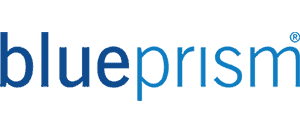How Intelligent Automation Can Predict Patient Needs
The COVID-19 pandemic has increased the need for healthcare providers to optimize their financial and medical resources. The Journal of mHealth reported that even before the pandemic, the healthcare system was being strained by a shortage of medical professionals, increasing costs, outdated management systems, and an aging population.
Healthcare providers are facing increasing costs and shrinking payments while being pressured to improve outcomes, enhance patient experience, and increase innovation. According to Gartner, treating and managing chronic conditions and mental health takes up almost 90% of the $3.3 trillion the U.S. spends on healthcare.
To reduce expenses without sacrificing the quality of care, healthcare providers must streamline healthcare delivery and operations. Increasing the use of intelligent automation will enable healthcare organizations to predict patient needs, improving outcomes and access to treatment while saving money.
The Rise of Intelligent Automation in Healthcare
Gartner predicted that 50% of healthcare providers will invest in robotic process automation (RPA) over the next three years, up from a mere 5% today. RPA combines user interface recognition technologies with workflow tasks that imitate the mouse-clicks and keystrokes made by humans so digital workers can use applications and perform repetitive, non-clinical back office tasks.
Healthcare providers use automation technology for both non-vertical-specific tasks, such as staffing an IT help desk, and critical vertical-specific tasks, such as physician credentialing or verifying insurance eligibility. By automating simpler routine tasks, healthcare personnel can focus on higher-value tasks.
Increased use of Intelligent Automation is part of a larger trend in healthcare towards using artificial intelligence (AI). Gartner forecasted that by 2023, 20% of patient interactions will involve some form of AI enablement, such as intelligent automation, increasing today’s rate by more than five times.
Predicting Patient Needs
The demand for intelligent automation is driven by the need to reveal the hidden significance of patient data. Gaining deeper insights through AI promotes better decision making. Using AI, healthcare providers can leverage historical data to predict upcoming patient needs and identify the best interventions before the patient’s condition begins deteriorating.
Intelligent automation is platform-independent, so it has the capacity to automate both new and existing legacy IT infrastructures. This means intelligent automation can overcome interoperability issues by bridging the gaps between different medical records systems so information can be extracted as needed from any one of them.
Healthcare intelligent automation can also help ensure that potentially critical information is not channeled into silos where it is hidden from the view of clinicians. Because intelligent automation pulls together data from different systems into a single point of reference, clinicians do not need to move between multiple interfaces to get the information they require to reach predictive insights.
Since electronic medical records (EMRs) are not yet universally available, intelligent automation has practical significance because it helps healthcare providers progress from simply thinking about managing data to using it to create knowledge.
Improving the Patient Experience
In healthcare, intelligent automation use cases range from auto-indexing and filing scanned documents into patient folders and reconciling DICOM images against a master patient index before archiving to automatically collecting data from patients and scheduling appointments based on a clinician’s availability.
While many of these processes take place behind the scenes, they have a positive impact on the patient experience. From the patient’s perspective, intelligent automation can make interactions with the health service and clinicians a faster, less fragmented experience.
 Whether making and changing appointments, obtaining test results, or managing medication and ongoing treatment plans, linking and integrating service provision results in more personalized, efficient, and effective healthcare. To this end, Blue Prism’s solutions help to integrate and automate processes across many of the core health information management systems, including Epic, Allscripts, Meditech, and Cerner.
Whether making and changing appointments, obtaining test results, or managing medication and ongoing treatment plans, linking and integrating service provision results in more personalized, efficient, and effective healthcare. To this end, Blue Prism’s solutions help to integrate and automate processes across many of the core health information management systems, including Epic, Allscripts, Meditech, and Cerner.
Since software digital workers perform to precise, pre-set workflows, intelligent automation reduces the potential for error and the costs that go with it. Digital workers can work around the clock without a drop-off in efficiency or quality, creating the potential not only to cut operating costs by streamlining workflows but to ensure greater compliance, which in turn results in higher levels of patient satisfaction.
In the future, intelligent automation can be enriched further using facial recognition and biometric technology to accelerate the patient check-in and EMR retrieval process, leading to shorter wait times.
Getting Started with Intelligent Automation in Healthcare
Introducing intelligent automation into a healthcare organization is surprisingly straightforward. Healthcare entities might presume that implementing new technology is going to be disruptive, difficult, and costly.
Initiating an intelligent automation program is, in most cases, a simple process, since it requires no heavy investment in additional IT systems. For example, intelligent automation has been added to the OnBase platform, giving healthcare organizations an end-to-end solution with zero integration costs.
Not only does intelligent automation lower expenses, but it increases revenue. KeyMark has created an RPA ROI Savings Calculator to help organizations determine the potential value of intelligent automation.
KeyMark makes building an intelligent automation program easy and cost-efficient for healthcare providers through our OnBase Boost that uses Blue Prism technology to automate tasks within OnBase. Now, you can automate workflow document handles, keyword queries, and ad hoc user tasks, as well as upload multiple documents at once.
These digital assets, hosted on the Blue Prism Digital Exchange, will be essential for anyone who wants to be more efficient with their OnBase document management software. As experts in both OnBase by Hyland and Blue Prism, KeyMark can also do custom automations as part of our OnBase Boost suite of assets.
Learn about cost savings from KeyMark’s ROI Savings Calculator or read Where Does RPA Fit for Healthcare.



